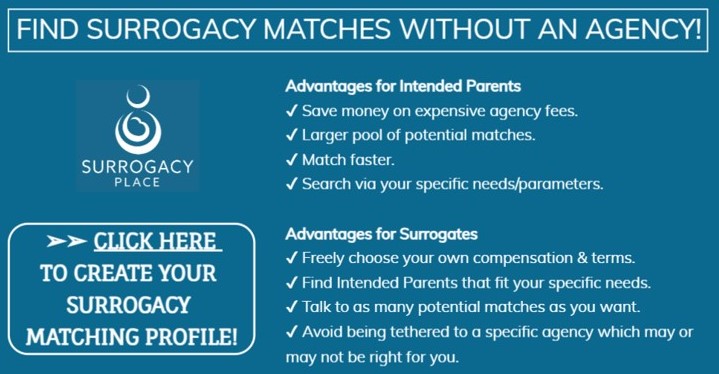Intended Fathers: Parental Surrogacy Rights for Fathers
Regulations concerning commercial surrogacy and parental rights can vary significantly depending on the jurisdiction. Always consult with legal professionals specializing in assisted reproduction and surrogacy to understand the legal and ethical framework of the surrogacy process locally. In many places, Intended Fathers and Intended Mothers may face different rights in surrogacy arrangements depending on biological connection to their child and sexual orientation or marital status. Generally-speaking in the United States, however, Intended Fathers (regardless of sexual orientation) have the same rights as all persons with respect to parentage through a surrogacy arrangement.
Legal Recognition:
Intended Fathers (as well as Intended Mothers) usually have to go through a legal process to establish their parental rights for their child(ren) born via a surrogacy arrangement. This includes petitioning the courts for a pre-birth order or going through a formal post-birth adoption process. Some jurisdictions recognize genetic links between the Intended Father or Intended Mother and the child born through surrogacy, while others may require additional legal steps. In cases where the Intended Father contributes his sperm, his genetic connection to the child may be a significant factor in determining parental rights.
Marital Status:
The marital status of the Intended Father may impact the ease with which he can establish parental rights. In some places, being married may simplify the legal process, especially if he is not genetically related to the child(ren). For general information, you can check out our state-by-state guide.
Paternity Leave:
Paternity leave for Intended Fathers in a surrogacy arrangement can vary depending on the laws and policies of the jurisdiction, as well as the specific circumstances of the employment.
In some jurisdictions, Intended Fathers are entitled to paternity leave regardless of the method of childbirth, including surrogacy. However, the specific benefits can vary widely. Some jurisdictions may have specific provisions recognizing surrogacy arrangements, while others may not explicitly address this situation.
Employer policies can play a significant role in determining paternity leave. Companies may have different policies regarding leave for the birth of a child via surrogacy or adoption of a child. It’s important for the Intended Father to review the specific policies of his employer and communicate with the human resources department to understand his available options.
In some cases, legal documentation recognizing the Intended Father as the legal parent may be required to access paternity leave. This documentation could include a pre-birth order, a post-birth legal process, or a court order establishing parental rights.
The duration of paternity leave can vary, and it may be influenced by both legal regulations and company policies. Some jurisdictions and companies provide a specific number of days for paternity leave, while others may have more flexible arrangements.
FMLA (Family and Medical Leave Act) in the United States:
In the United States, the Family and Medical Leave Act (FMLA) allows eligible employees to take up to 12 weeks of unpaid leave for certain family and medical reasons, including the birth or adoption of a child. However, FMLA does not specifically address surrogacy, and the availability of paternity leave may depend on the employer’s policies.
It’s crucial for individuals involved in surrogacy arrangements to familiarize themselves with the relevant laws and policies in their jurisdiction and their workplace. Seeking guidance from human resources professionals and legal experts can help navigate the process of obtaining paternity leave in the context of a surrogacy arrangement.
Single Fathers in Surrogacy:
Surrogacy is becoming an increasingly popular option for single fathers for several reasons:
Advancements in Reproductive Technology: Technological advancements in assisted reproductive technologies, such as in vitro fertilization (IVF) and gestational surrogacy, have made it more feasible for individuals, including single fathers, to have biological children.
Changing Social Attitudes: Societal attitudes toward non-traditional family structures have evolved over time. Single fatherhood through surrogacy is now more accepted, and there is a growing recognition that individuals can be competent and loving parents regardless of their marital status.
Legal Frameworks and Accessibility: In some jurisdictions, legal frameworks have been established to support surrogacy arrangements, making the process more accessible for single individuals.
Desire for Biological Connection: Some single fathers may prefer surrogacy over other family-building options because it allows them to have a biological connection with their child. Gestational surrogacy, in particular, enables the use of the Intended Father’s sperm and a donor egg, facilitating a biological link.
Increased Awareness: As information about surrogacy becomes more widely available, single individuals, including fathers, are becoming more aware of the option and its potential benefits. This increased awareness can contribute to a higher acceptance and utilization of surrogacy services.
Delay in Parenthood: Some individuals may choose to delay starting a family until they are more established in their careers or have achieved other personal goals. As a result, they may turn to surrogacy when they are ready to become parents, even if they are doing so as single fathers.
Financial Stability: Single fathers who are financially stable may find surrogacy more accessible, as the process can involve significant costs. Financial stability can make it more feasible for individuals to pursue surrogacy as a means of building their families.
LGBTQ+ Fathers in Surrogacy:
The rights of gay men/LGBTQ+ couples as parents in a surrogacy arrangement vary depending on the jurisdiction, as laws and regulations related to surrogacy and LGBTQ+ parenting can differ. In the United States, generally speaking, LGBTQ+ couples are treated the same as their heterosexual counterparts.
Legal Recognition of Parental Rights:
In some places, legal recognition of the parental rights of gay/LGBTQ+ couples in surrogacy arrangements is well-established, and they can obtain legal parentage without significant obstacles.
In other jurisdictions, there may be legal challenges or restrictions, and LGBTQ+ couples may need to navigate complex legal processes to secure their parental rights. In some places, pre-birth orders allow Intended Parents, including LGBTQ+ couples, to be recognized as legal parents before the child is born. This can simplify the legal process and provide clarity on parental rights. In jurisdictions where pre-birth orders are not available or limited, LGBTQ+ couples may need to pursue post-birth adoptions or other legal procedures to establish their parental rights.
International Considerations:
For LGBTQ+ couples engaging in international surrogacy, additional legal complexities may arise due to differences in laws and regulations between the country where the surrogacy takes place and the Intended Parents’ home country. It’s essential to be aware of and navigate any legal challenges that may arise in cross-border surrogacy arrangements.
Seeking legal counsel with expertise in reproductive law is crucial. An attorney can provide guidance on the legal aspects of the process, including parental rights, surrogacy agreements, and any potential legal challenges.
Advocacy and Awareness:
LGBTQ+ advocacy organizations and legal experts often work to promote and protect the rights of LGBTQ+ couples and individuals in surrogacy arrangements. Staying informed about legal developments and engaging with supportive organizations can be beneficial.
Parental Rights in Divorce:
The outcome of a surrogacy arrangement when Intended Parents divorce can vary depending on the laws of the jurisdiction involved and the specific details outlined in the surrogacy agreement. It’s important to note that surrogacy laws can differ significantly between countries and even within different states or regions.
The terms of the surrogacy contract will play a crucial role. The agreement typically outlines the rights and responsibilities of all parties involved, including both the Intended Parents and surrogate. If there are specific provisions related to divorce or the dissolution of the Intended Parents’ relationship, those terms will be considered.
The legal parental rights of the Intended Parents may be established through a pre-birth order or post-birth legal procedures, depending on the jurisdiction. If the Intended Parents have both already been recognized as the legal parents, a divorce may not necessarily impact those rights.
If a divorce occurs during a surrogacy arrangement, the court handling the divorce may make decisions regarding the legal parentage of the child. The court may consider the best interests of the child and the agreements made in the surrogacy arrangement.
Clear communication between all parties involved is essential. If issues arise, the parties may choose to renegotiate or amend their surrogacy agreement, potentially with the assistance of legal professionals.
It is strongly advised for individuals involved in surrogacy arrangements to consult with legal professionals who specialize in reproductive law to understand the specific laws and potential outcomes based on their unique circumstances and location. Additionally, consulting with a family law attorney during a divorce is important to address any potential impact on parental rights.
FAQ: Surrogacy Rights for Intended Fathers
Do Intended Fathers and Intended Mothers have equal rights in surrogacy arrangements?
In the United States, Intended Fathers generally have equal rights regardless of gender or sexual orientation.
How does marital status impact the ease of establishing parental rights in surrogacy arrangements?
Marital status can affect the ease of legal processes, with marriage potentially simplifying the process, especially for non-genetically related Intended Fathers (and Mothers).
What considerations are important regarding paternity leave for Intended Fathers in surrogacy arrangements, and how do employer policies come into play?
Paternity leave availability varies by jurisdiction and employer policies. Legal documentation, such as pre-birth orders or court-recognized parental rights, may be required.
What societal and technological factors contribute to surrogacy becoming popular among single fathers?
Advancements in reproductive technology, changing social attitudes, legal frameworks supporting surrogacy, and the desire for a biological connection contribute to the popularity among single fathers.
How are LGBTQ+ fathers treated legally in surrogacy arrangements, and what legal challenges might they face?
Legal recognition varies by jurisdiction. While some places establish parental rights without obstacles, others may require LGBTQ+ couples to navigate complex legal processes. In the United States, most jurisdictions treat LGBTQ+ couples the same as their heterosexual counterparts.
What legal complexities may arise for LGBTQ+ couples engaging in international surrogacy, and how can they navigate these challenges?
Differences in laws between the surrogacy country and the Intended Parents’ home country can pose legal complexities. Seeking guidance from legal professionals with reproductive law expertise is crucial.
How does divorce impact surrogacy agreements and parental rights, and what steps can be taken to address potential issues?
Court decisions during divorce depend on the best interests of the child and surrogacy agreement terms. Clear communication and potential renegotiation of agreements may be necessary. Consulting both an assisted reproduction attorney and a family law attorney during divorce is crucial to address potential impacts on parental rights.











